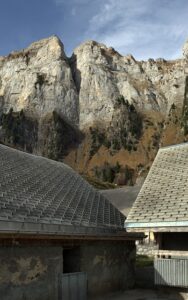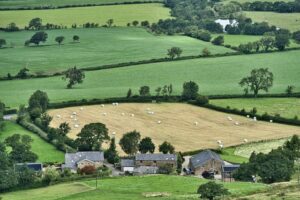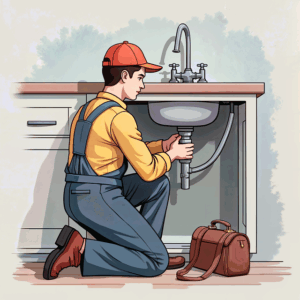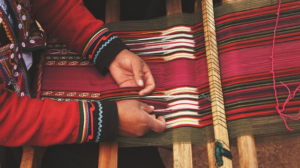Optimizing Agriculture: Spacious Farm Shed Solutions for the Central Tablelands Climate
The article discusses the importance of farm sheds in the Central Tablelands, a region characterized by diverse agriculture and undulating landscapes. These structures are essential for protecting crops, storing equipment, and sheltering livest…….
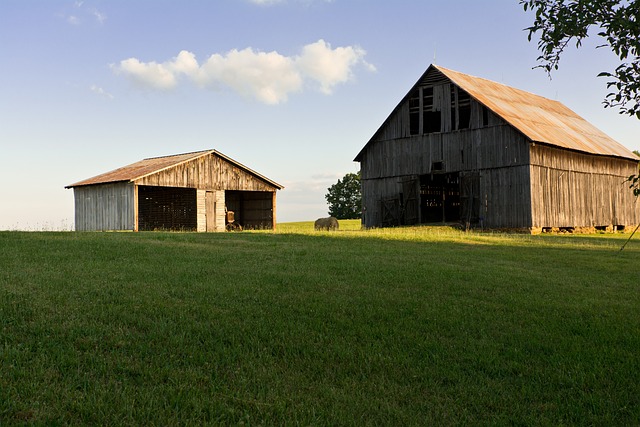
The article discusses the importance of farm sheds in the Central Tablelands, a region characterized by diverse agriculture and undulating landscapes. These structures are essential for protecting crops, storing equipment, and sheltering livestock, all while being designed to withstand the area's variable weather conditions. The durability of steel as a building material is highlighted, noting its resistance to local climate challenges such as high UV levels and heavy rainfall. Design elements such as optimal roof pitches, thermal mass materials, and high-quality insulation are critical for managing extreme temperature changes. Modernizing farm sheds with versatile designs and smart technologies like renewable energy systems enhances productivity and sustainability. Innovative features like roller doors for efficient logistics, natural lighting, and advanced climate control contribute to better farming practices. The article concludes by emphasizing the role of these upgraded structures in advancing agricultural efficiency and their pivotal impact on the Central Tablelands' sustainable farming operations. (Keywords: Farm Sheds, Durable Materials, Climate Resistance, Technological Integration, Productivity Enhancement, Insulation, Smart Agricultural Technologies, Renewable Energy Solutions, Sustainable Farming Practices)
exploration into the pivotal role of expansive farm sheds in the Central Tablelands’ agricultural landscape. This article delves into the imperative for spacious structures that cater to the unique demands of the region’s farming operations. We will dissect design factors critical for optimizing shed utility, scrutinize material choices vital for withstanding the local climate, and highlight innovative features that can elevate farm efficiency. Furthermore, insights from successful farm shed implementations across the Central Tablelands will underscore the practical advantages of investing in robust agricultural infrastructure.
- Understanding the Necessity of Spacious Farm Sheds in the Central Tablelands
- Design Considerations for Effective Farm Shed Utilization in the Region
- Material Selection: Ensuring Durability and Longevity of Your Farm Shed in the Tablelands Climate
- Maximizing Functionality: Innovative Features for Large Farm Sheds to Enhance Agricultural Operations
- Case Studies: Successful Large Farm Shed Implementations Across the Central Tablelands
Understanding the Necessity of Spacious Farm Sheds in the Central Tablelands

In the Central Tablelands, a region characterized by its undulating terrain and fertile soils, farm shed solutions are pivotal for agricultural productivity and sustainability. The unique environmental conditions, which include variable weather patterns and diverse crop types, necessitate spacious farm sheds that offer ample protection against the elements. These structures serve as multifunctional spaces where farmers can store equipment, protect livestock, and handle produce during critical periods. The expansive nature of these farm sheds ensures that they can accommodate large-scale operations, providing the necessary infrastructure to efficiently manage the demands of farming in this region. Their robust design withstands the test of time and climate, making them an essential investment for any Central Tablelands agricultural enterprise. Moreover, the strategic placement of these sheds on farms optimizes workflow, allowing for better organization and easier access to machinery and feed, thereby enhancing operational efficiency. The versatility of these farm sheds also means they can be adapted over time to meet changing needs, such as expanding storage areas or incorporating additional animal husbandry facilities. In conclusion—a phrase used sparingly—these spacious farm sheds are a cornerstone of modern farming practices in the Central Tablelands, offering scalable, durable, and practical solutions for the region’s diverse agricultural activities.
Design Considerations for Effective Farm Shed Utilization in the Region

In the Central Tablelands of Australia, farm sheds play a pivotal role in the agricultural operations of large-scale farms. Design considerations for these structures are critical to their effectiveness and longevity. The local climate, characterized by its variability, demands shed designs that offer both ample shelter from harsh sun and protection against inclement weather. Materials used should be durable and withstand the intense UV radiation, as well as the potential for heavy rainfall and strong winds. A strategic layout allows for efficient organization of farm equipment and machinery, facilitating easier movement and maintenance. Additionally, the design must accommodate the storage needs of crops and hay, requiring a thoughtful blend of open space and enclosed areas. Ventilation is another key factor; designs should incorporate features that ensure proper airflow to maintain a temperate environment for stored goods and reduce the risk of mold and condensation. Furthermore, the integration of natural light can enhance working conditions and reduce energy costs associated with artificial lighting.
To optimize farm shed utilization, considerations must extend beyond initial construction. The design should allow for easy adaptation and expansion to cater to evolving farming practices and potentially changing storage requirements. Accessibility for equipment entry and exit is paramount, as is the provision of power and water where necessary. Incorporating best practices in agricultural shed design within the Central Tablelands ensures that these structures are not only functional and sustainable but also adaptable to the needs of modern farming operations. By prioritizing these design elements, farm sheds become a critical asset, supporting the efficiency and productivity of the region’s vast agricultural lands.
Material Selection: Ensuring Durability and Longevity of Your Farm Shed in the Tablelands Climate

When constructing large farm sheds in the Central Tablelands, material selection plays a pivotal role in ensuring the structure’s durability and longevity, particularly given the region’s diverse and often challenging climate. The robustness of steel as a primary building material cannot be overstated; its resistance to the harsh elements, including the intense UV radiation and occasional heavy rainfall experienced in the Tablelands, makes it an ideal choice for farm shed construction. Steel farm sheds are not only resilient but also low maintenance, ensuring that farmers can focus on their livestock and produce rather than constant upkeep. Additionally, the use of high-quality galvanized steel offers a protective zinc coating that combats corrosion and extends the lifespan of the shed significantly. For those seeking a more traditional aesthetic, Colorbond steel is a durable alternative that comes in a variety of colors to complement the rural setting while maintaining the structural integrity required for agricultural purposes.
Furthermore, the design and materials used in the roofing system are equally crucial. Adequate roof pitch and material with high thermal mass can mitigate the effects of extreme temperature fluctuations, keeping the interior environment more stable. Choosing the right insulation not only conserves energy but also protects the contents within from both heat and cold. The integration of advanced designs that account for wind loads and the potential for heavy snow accumulation is essential to maintaining the integrity of the structure throughout the year. In the Central Tablelands, where weather patterns can be unpredictable, selecting the right materials for your farm shed is a decision that will pay dividends in terms of longevity and the overall return on investment. Careful consideration of material options, such as steel’s varying gauges and Colorbond colors, along with roofing designs attuned to local weather conditions, ensures that your farm shed stands strong against the test of time.
Maximizing Functionality: Innovative Features for Large Farm Sheds to Enhance Agricultural Operations

Incorporating innovative features into large farm sheds can significantly enhance agricultural operations in the Central Tablelands, a region characterized by its diverse farming activities and varied topography. Designing sheds with versatility in mind, farmers can utilize these structures for a range of purposes, from housing machinery to storing feed and harvests. Advanced materials have revolutionized shed construction, providing durable options that withstand the harsh elements common in the region. For instance, high-tensile steel frames paired with weather-resistant cladding ensure longevity and protection for valuable equipment and crops. Additionally, optimizing the layout with strategic placement of roller doors allows for efficient movement of vehicles, minimizing time spent on logistics and maximizing productivity.
Furthermore, integrating smart agricultural technologies within farm sheds can lead to more data-driven decision-making processes. Features such as weatherproofed solar panels generate renewable energy, reducing operational costs while providing power for automation systems that control lighting, ventilation, and climate conditions. These systems create an optimal environment for temperature-sensitive produce and livestock. Moreover, the inclusion of high-quality insulation not only maintains a stable interior climate but also protects against condensation and moisture build-up, safeguarding against mold and rust. Such advancements in farm shed design are essential for modern agricultural practices, particularly in regions like the Central Tablelands where environmental conditions can be both challenging and beneficial to crop yield and livestock health.
Case Studies: Successful Large Farm Shed Implementations Across the Central Tablelands

In the Central Tablelands, large farm sheds have proven to be invaluable assets for agricultural productivity and efficiency. Case studies from the region demonstrate how these expansive structures have been tailored to meet specific farming needs, enhancing both storage capacity and operational functionality. For instance, a prominent case involves a local cattle operation that installed a 1000-square-meter shed. This facility not only provided ample space for housing livestock but also included strategically placed skylights to maximize natural lighting and reduce reliance on artificial sources. The result was a healthier environment for the animals, as well as significant cost savings on energy bills. Another exemplary implementation is found in a nearby grain farm that constructed a series of connected sheds spanning over 2000 square meters. These sheds were designed with a focus on efficient crop storage, incorporating advanced ventilation systems to prevent moisture buildup and preserve the integrity of the stored grains. The success of these sheds is attributed to their adaptability, durability, and the ability to integrate modern agricultural technology, all key factors in ensuring sustainable farming practices within the Central Tablelands. Farmers in the region have recognized the benefits of large farm sheds, leading to a growing trend of investment in these structures to adapt to the evolving demands of modern agriculture.
In conclusion, the adoption of large farm shed structures in the Central Tablelands represents a strategic response to the region’s agricultural demands. These expansive facilities, designed with consideration for local conditions and operational needs, offer unparalleled versatility and protection for crops and livestock. By thoughtfully selecting materials that endure the unique climatic challenges of the Tablelands, farmers can ensure their investments remain robust over time. Moreover, integrating innovative features into farm shed design further empowers these spaces to streamline agricultural processes and enhance productivity. The case studies presented underscore the tangible benefits reaped by early adopters in the region, proving that well-designed farm sheds are not just a matter of necessity but a catalyst for prosperity in the Central Tablelands’ farming community. Farmers here are now better positioned to meet the needs of a growing population while preserving the land’s fertility for generations to come.
